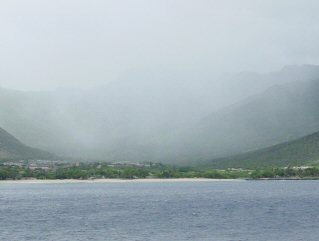Impacts of La Niña
The NOAA Climate Prediction Center announced in January 2006 the official return of La Niña. Oceanic sea surface temperatures have met the operational definition of La Niña for the November through January period. La Niña is the periodic cooling of ocean waters in the east-central equatorial Pacific, which can impact the typical alignment of weather patterns around the globe. NOAA predicts this La Niña event will likely remain into late spring, and possibly into summer.
"In mid-January 2006 the atmosphere over the eastern North Pacific and western U.S. began to exhibit typical La Niña characteristics in response to the cooling in the tropical central Pacific Ocean," said Vice Admiral Conrad C. Lautenbacher, undersecretary of commerce for oceans and atmosphere and NOAA administrator. He continued to say, "This pattern will favor continued drought in parts of the South and Southwest from Arizona to Arkansas and Louisiana, and above normal precipitation in the Northwest and the Tennessee Valley area."
Internationally, La Niña impacts during the Northern Hemisphere winter typically include enhanced rainfall across Indonesia and northern Australia, as well as in the Amazon Basin and in southeastern Africa and below-average rainfall across the eastern half of the equatorial Pacific and eastern equatorial Africa. Typically, La Niña events favor increased Atlantic hurricane activity.
La Niña events are operationally defined using the Oceanic Niño Index (ONI), which is the three-month running-mean values of sea surface temperature departures from average in the region of the central Pacific (bounded by 5o N to 5o S, 120 to 170o W). NOAA defines La Niña as the condition whereby the ONI is less than or equal to -0.5 degrees C. This definition was adopted by the U.S. and 25 other countries in North and Central America and the Caribbean in April 2005. La Niña events recur approximately every three to five years. The last La Niña occurred in 2000-2001 and was a relatively weak event compared to the 1998-2000 event. NOAA continually releases 90 day outlook updates on El Niño/La Niña conditions and also its Atlantic and Pacific hurricane season outlooks.
